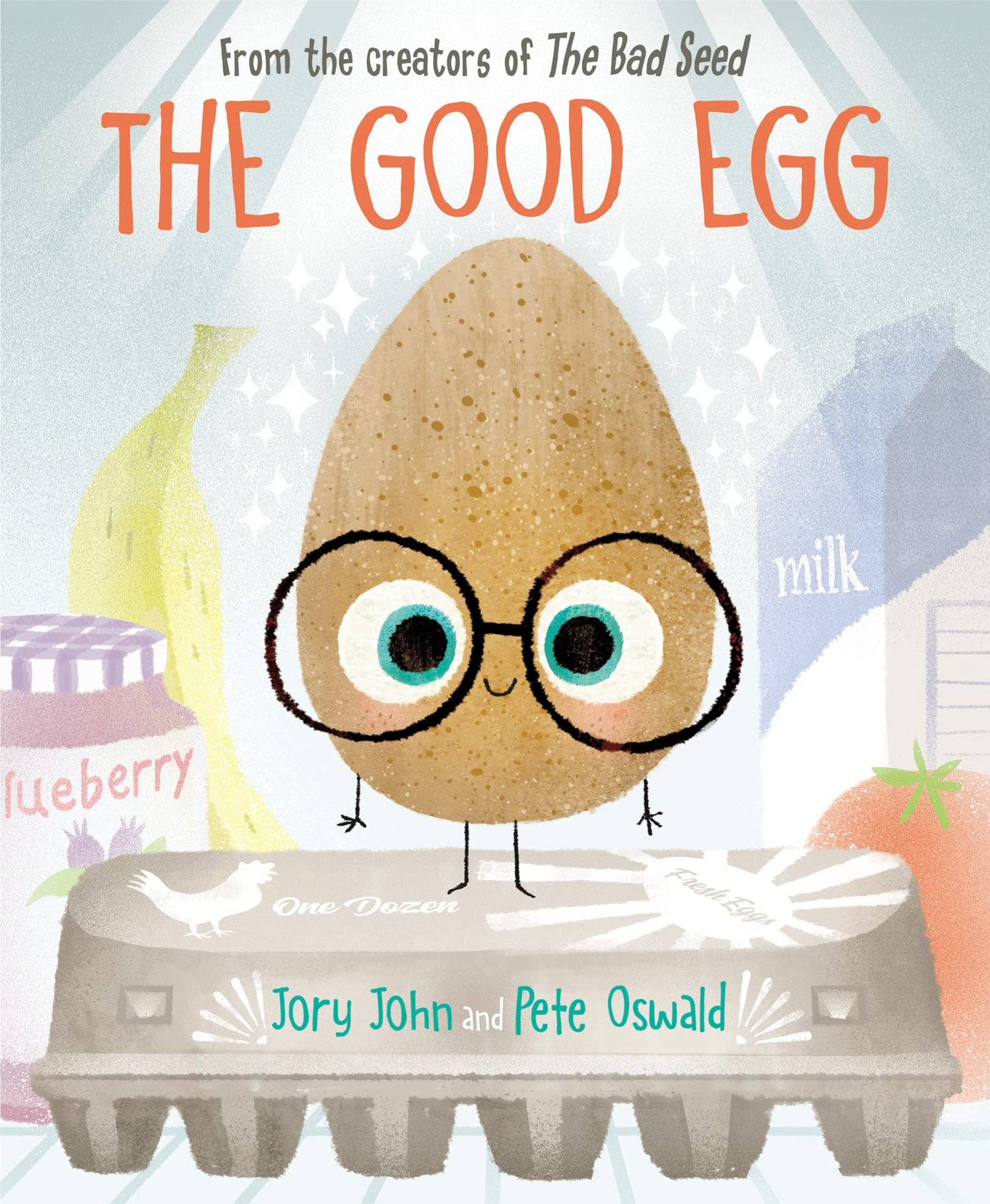This month's Book Nook topic is...
Evaluating the Story with The Good Egg
 To truly understand stories, children must go beyond the words and pictures on the page and figure things out that are not specifically stated in the book. In other words, to truly grasp a story, they must “read between the lines”.
To truly understand stories, children must go beyond the words and pictures on the page and figure things out that are not specifically stated in the book. In other words, to truly grasp a story, they must “read between the lines”.
One effective technique for helping a child read between the lines is to evaluate the story. You can encourage children to evaluate what happens in a story by asking them to decide if something is a good idea or not, or whether something will work or not, and to explain how they reached that conclusion. This builds children’s understanding of the story by encouraging them to think more deeply about what is happening.
Let’s get started!
The Book:
The Good Egg by Jory John and Pete Oswald
Why we picked it
The Good Egg is a story about an egg who works really hard to be ‘good’ even though the other eggs in his carton are constantly misbehaving. Eventually, the Good Egg’s shell starts to crack from all the pressure to be perfect and he decides that it’s time to make a change! In the end, the book’s theme around balance and self-care shows that the Good Egg’s decisions at the start of the book maybe weren’t so good after all.
The illustrations in this book show the eggs acting ‘good’ and ‘bad’ in a variety of situations, making it a great book to encourage children to evaluate the characters’ actions.
Building understanding in the first reading
When you read this story for the first time, it’s best to keep the story moving and have very short conversations that help your child remember the main characters, their actions, and what the main problem is. For example, you could make comments like:
- “Look at all of the ‘bad’ things the other eggs are doing!”
- “The Good Egg has had enough of trying to change the other eggs.”
How to encourage a child to evaluate the story
In later readings, once the child has grasped the basic elements of the story, show them that you are thinking beyond the text by using “thinking-out-loud” comments. For example, “I’m thinking that the Good Egg made the right decision by leaving the other eggs. Now he has some time to relax on his own.” Then, pause and wait to give the child a chance to respond with their own comment.
Another great way to encourage the child to evaluate the story is by asking questions that challenge them to evaluate what is happening. These include questions like:
- Do you think it’s a good idea for the Good Egg to try to change what the ‘bad’ eggs are doing? Why?
- Why do you think the Good Egg started to feel better?
- Was it the right choice for the Good Egg to come back? Why?
Remember to pause and wait after asking a question. This gives the child time to think about what you’ve asked and come up with a response. If the child is unable to answer the question, you can give clues to lead them to the answer, or simply provide the answer yourself. For instance, “Maybe it wasn’t such a good idea for the Good Egg to try to make the other eggs act like him. All of that work made him feel so stressed, his shell started cracking!"
The more times you read the story, the more opportunities you have for conversations that deepen the child’s understanding of the story. Having frequent conversations that encourage a child to think beyond the text helps develop the comprehension skills they’ll need to successfully read on their own.
Happy reading!
More Resources
The strategies in this Book Nook post are drawn from Hanen’s practical, research-based guidebooks for building emergent literacy. Explore the links below to learn more about how these guidebooks can support you.
For Parents I'm Ready! guidebook
I'm Ready! guidebook
For Educators ABC and Beyond guidebook
ABC and Beyond guidebook
